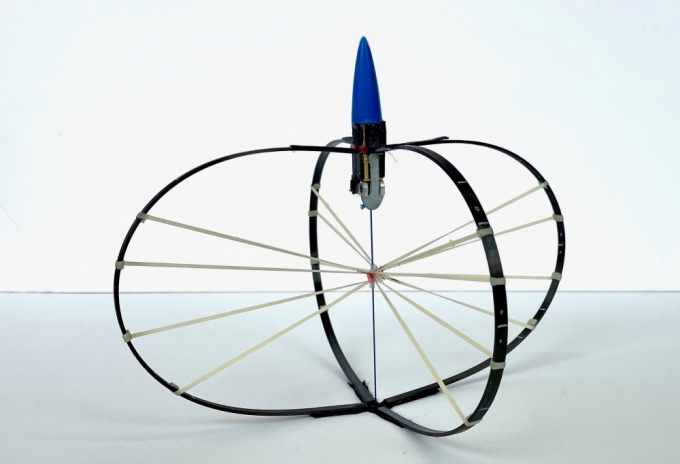A mechanical jumper developed by UC Santa Barbara engineering professor Elliot Hawkes and collaborators is capable of achieving the tallest height — roughly 100 feet (30 meters) — of any jumper to date, engineered or biological. The feat, described in an article published in the journal NATURE, represents a fresh approach to the design of jumping devices, and advances the understanding of jumping as a form of locomotion.
“The motivation came from a scientific question,” said Hawkes, who as a roboticist seeks to understand the many possible methods a machine might employ to navigate its environment. “We wanted to understand what the limits were on engineered jumpers.”
While there are centuries’ worth of studies on biological jumpers (that would be us in the animal kingdom), and decades’ worth of research on mostly bio-inspired mechanical jumpers, he said, the two lines of inquiry have been kept somewhat separate.
“There hadn’t really been a study that compares and contrasts the two and how their limits are different — whether engineered jumpers are really limited to the same laws that biological jumpers are,” Hawkes said.
Read the complete article in The Current.
Read the research paper in NATURE.

This jumping device, from the Hawkes lab, achieved an unprecedented vertical leap of approximately 100 feet.
